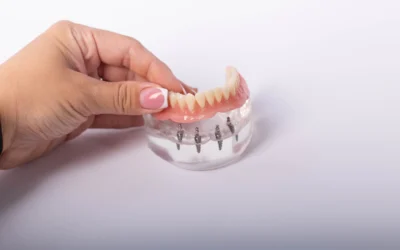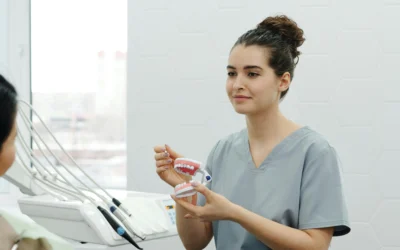Any good journalist knows the 5 W’s of writing a compelling masterpiece of reporting:
Who?
What?
When?
Where?
Why?
While the subject of dental crowns might not sell newspapers, it is still a subject that plenty of people wonder about, especially if you find yourself staring at an x-ray in a dentist’s office, wondering what to do, and what on earth a dental crown even is. Here are some answers to your burning questions:
WHO
Who needs a dental crown? Anyone with a weak or damaged tooth. This damage might come from decay due to cavities, but it can also be caused by trauma to the mouth. (We will save the conversation about mouthguards for later, but please wear one.) If the damage is left untreated, you could lose the tooth, which can cause all sorts of problems.
Sometimes a tooth is just cracked from the damage or decay and the crown is needed to “glue” it back together and hold it in place. Or perhaps the tooth is strong but has been discolored by medicine, food, or other conditions. A crown can restore it to its natural color.
If you have implants or bridges, dental crowns can fill spaces. Our mouth is designed to be full of teeth, and when there are unplanned gaps, it can shift all the remaining teeth and affect the strength of the jaw.
WHAT
What is a dental crown? Does it mean you are royalty?
Not exactly.
A crown is a sort of “cap” for the tooth – a very tight hat that fits onto your tooth to protect it. There are several types of materials used to make dental crowns.
- Metal: This is a durable choice, but not natural looking. Metal crowns are built to last, but are generally only used for the molars in the back of the mouth. But, if bling is your thing, then put them front and center.
- Porcelain + Metal: This is a way to get the durability of metal with the more natural “tooth” look that the porcelain veneer can offer. Sometimes, though, the porcelain can wear thin, depending on the location of the tooth.
- Resin: This is one of the least expensive options, and also one of the least durable. It has a higher chance of chipping or wearing down than the metal or porcelain/metal options.
- All-Ceramic or All-Porcelain: These are the best option for the most natural look. They are more durable than resin but not as durable as metal. They are a common choice for the front teeth, unless you prefer the Bond villain look.
- Pressed Ceramic: These are a hybrid between ceramic and porcelain. The inner core is a very durable, hard ceramic. An outer layer of porcelain gives it a nice, natural appearance. These aren’t as long-lasting as metal crowns but will last longer than the all-porcelain option.
WHEN
So, when do you get the crown? That’s easy.
As soon as possible!
A damaged tooth, whether from decay or trauma to the mouth, will only get weaker as time goes by. Every day that it is unprotected doesn’t just mean pain for you, it can also mean a more costly and invasive procedure down the road.
A quick search for “24-hour emergency dentist near me” will help you find a practitioner that can help you quickly, and will often work with you even if you have no insurance.
WHERE
Once you find a dentist, that’s where the magic will happen. Thankfully, they aren’t magicians who won’t reveal their secrets. Any good dentist will be more than willing to walk you through the process. Here’s the general breakdown of what will happen at the office, which usually takes two separate sessions.
- X-ray–This is to see where the damage is and check on the health of the pulp inside the tooth. That’s the tooth’s core. If it is infected, then a root canal might be required before the crown.
- File it Down–Once any infection is removed, it is time to sand down the tooth to make it ready for its new “hat.” Don’t worry, everything will be nice and numb.
- Make an Imprint–If the tooth has to be sanded down quite a bit, then the dentist will use some filling material to rebuild it. Then, they will make an imprint so the crown can be made as close to your natural tooth shape as possible. You’ll get a temporary crown to hold the place while your real crown is being shaped.
- Make it permanent–Some dentist offices can make their crowns in-house, which means just one visit for you. Others have them made by a specialized lab, which means a second visit to get it put in place. What matters most is that the dental crown is made well and you feel safe and understood in the office.
WHY?
An old Pantene shampoo ad can answer that question. Why get a dental crown?
“Because you’re worth it.”
You are! Not only are your teeth a big part of your persona–present when you smile, talk, or laugh, they are some of the hardest workers in your body. They deserve good care, and so do you. Sometimes our teeth need a little extra TLC and protection. Dental crowns can keep your teeth strong and your smile confident. And now, you can be a little more confident in that chair when the X-ray shows the bad news.



